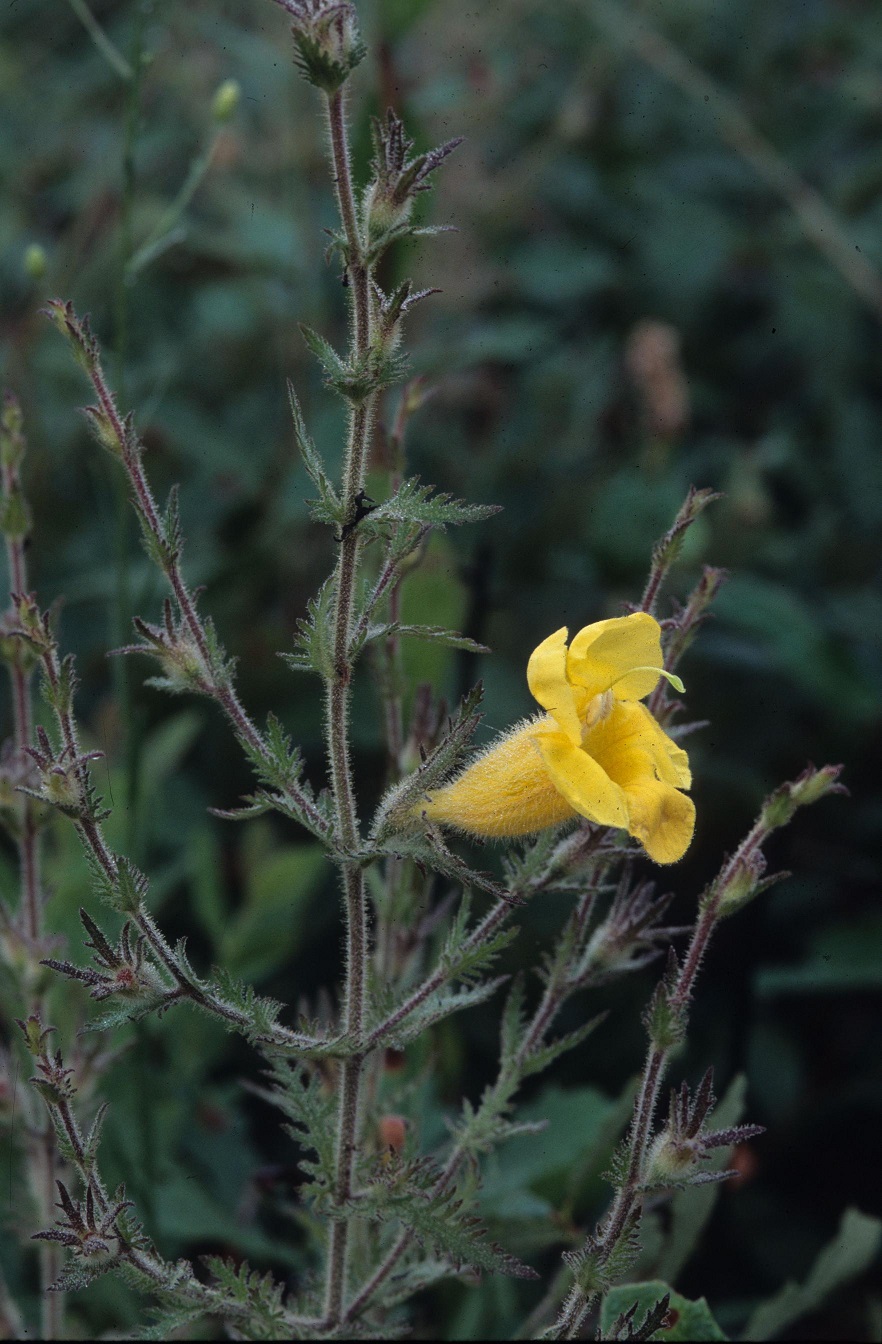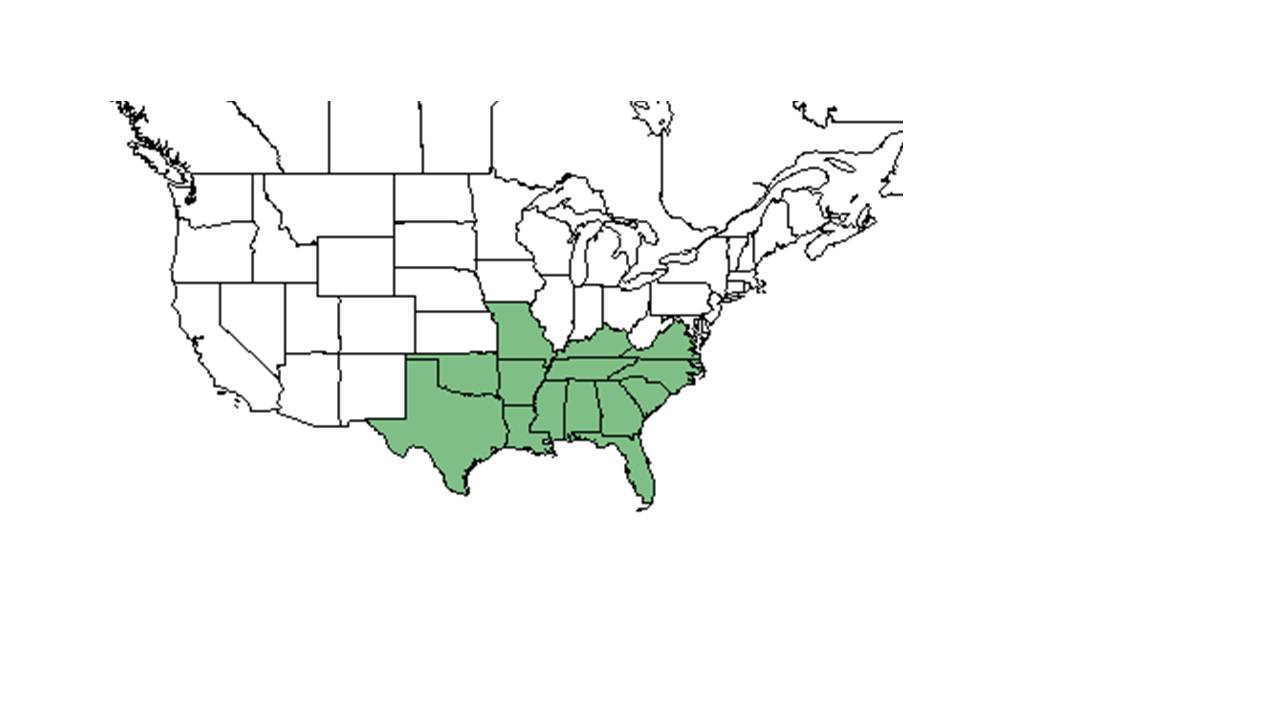Aureolaria pectinata
| Aureolaria pectinata | |
|---|---|

| |
| Photo was taken by Gil Nelson | |
| Scientific classification | |
| Kingdom: | Plantae |
| Division: | Magnoliophyta - Flowering plants |
| Class: | Magnoliopsida - Dicotyledons |
| Order: | Lamiales |
| Family: | Orobanchaceae |
| Genus: | Aureolaria |
| Species: | A. pectinata |
| Binomial name | |
| Aureolaria pectinata (Nutt.) Pennell | |

| |
| Natural range of Aureolaria pectinata from USDA NRCS Plants Database. | |
Common name: Combleaf yellow false foxglove
Contents
Taxonomic notes
Synonyms: A. pedicularia (Linnaeus) Rafinesque var. pectinata (Nuttall) Gleason; Gerardia pectinata (Nuttall) Bentham; A. pectinata ssp. eurycarpa (Pennell) Pennell; A. pectinata ssp. transcedens (Pennell) Pennell; A. pectinata ssp. typica; A. pectinata ssp. pectinata; A. pedicularia
Description
A. pectinata has opposite, fern like leaves which are pinnately incised, with sticky glandular hairs.[1] It is a hemiparasitic plant that attaches modified roots to the roots of host plants, such as oaks.[2]
According to Radford (1964) A. pectinata is very similar to A. pedicularia. Wunderlin and Hansen (2011) recognize A. pectinata and do not recognize A. pedicularia.
In the genus Aureolaria, the plants are either annual or perennial. They are parasitic on the roots of Quercus (oaks) and they turn black when dried. The cauline leaves are opposite or subopposite. The flowers are showy, the calyx is 5-parted, the lobes are shorter to longer than the tube. The corolla is yellow in color, bilabiate, and 5-parted. The tube is campanulate and the lobes are spreading. There are 4 stamens, didynamous, included, filaments are flattened, and the 2 longer more or less lanose. The anther sacs are basally awned. The stigma is capitate and exserted.[3]
Radford described A. pectinata to be very similar to and integrated A. pedicularia. A. pectinata species usually have glandular-pubescent throughout the plant. The leaves are pubescent to villous, and some of the trichomes can be glandular. The capsule is ovoid and the base is enclosed in the calyx tube. Flowers from May to September; and from September to October.[3]
Distribution
Eastern Texas and Oklahoma to Missouri and eastward to the Atlantic Coast.[2]
Ecology
This is a hemiparasitic species that has green tissue and preforms photosynthesis, but also obtains sugars and minerals from a host plant using modified roots (haustoria) to attach to the host.[4]
Habitat
A. pectinata can occur in turkey oak sandhills, longleaf pine communities, upland hardwood forests, savannas, glades, stream banks and slash pineland.[5] [1]
Associated species include Pinus elliottii, Serenoa repens, Quercus geminata, Q. myrtifolia, Q. chapmanii, Liatris elegans, L. tenuifolia, and Salvia azurea (UF Herbarium).
Phenology
A. pectinata has bisexual, yellow flowers that bloom spring, summer, and fall. The ovary is superior and fruits in a capsule summer and fall.[1] The flower buds have a reddish tip, while the calyx is densely hairy.[2]
Fire ecology
Studies have observed that A. pectinata does not occur in unburned sites, but does occur in burned sites (Harrod et al. 2000; Kush et al. 2000). Kush et al. (2000) found that A. pectinata occurred in biennially burned longleaf pine stands regardless of burning season. In Harrod et al. (2000) it was observed growing in a burned xeric hardwood site.
Pollination
Hummingbirds and bumblebees pollinate Aureolaria pectinata. [2]
Use by animals
It is the larval host plant for the Baltimore checkerspot butterfly (Euphydryas phaeton).[2]
Conservation and management
Conservation status: Global: G5.[6]
Cultivation and restoration
Photo Gallery
References and notes
- ↑ 1.0 1.1 1.2 [Native and Naturalized Plants of the Carolinas and Georgia] Accessed November 30, 2015.
- ↑ 2.0 2.1 2.2 2.3 2.4 [Arkansas Native Plant Society] Accessed November 30, 2015
- ↑ 3.0 3.1 Radford, Albert E., Harry E. Ahles, and C. Ritchie Bell. Manual of the Vascular Flora of the Carolinas. 1964, 1968. The University of North Carolina Press. 956-7. Print.
- ↑ [[1]]Arkansas Native Plant Society. Accessed: April 1, 2016
- ↑ [Missouri Department of Conservation] Accessed November 30, 2015
- ↑ [NatureServe] Accessed November 30, 2015